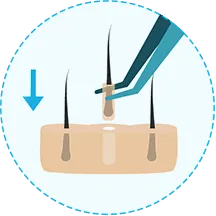4 Things You Need To Know About Facial Fillers
Facial fillers have become popular for people looking to enhance their appearance without undergoing invasive surgery. Fillers offer a way to smooth wrinkles, plump areas of lost volume, and generally rejuvenate the facial skin. However, before you decide to get facial fillers, there are some important aspects you should be aware of. Read on to find out four things you need to know about facial fillers.
Safety and Suitability
 Safety is paramount when considering facial fillers. These treatments are maximally safe when a qualified professional performs them. However, they are not suitable for everyone. People with certain allergies, skin infections, or autoimmune disorders might need to avoid or be cautious about using fillers. Having a thorough consultation with a healthcare provider is essential to discuss your medical history and ensure facial fillers are a safe option for you.
Safety is paramount when considering facial fillers. These treatments are maximally safe when a qualified professional performs them. However, they are not suitable for everyone. People with certain allergies, skin infections, or autoimmune disorders might need to avoid or be cautious about using fillers. Having a thorough consultation with a healthcare provider is essential to discuss your medical history and ensure facial fillers are a safe option for you.
Types of Fillers
Various types of facial fillers are available, each designed for specific purposes. The most common types include hyaluronic acid, calcium hydroxyapatite, poly-L-lactic acid, and polymethyl methacrylate beads. Hyaluronic acid is popular for its natural look and feel, while other options are better for more targeted or longer-lasting results. Understanding the differences between these fillers can help you and your practitioner decide which is best for your desired outcome.
Potential Side Effects
Like any cosmetic procedure, facial fillers come with potential side effects. Most are mild, such as redness, swelling, or bruising at the injection site. These usually subside within a few days. More serious complications, although rare, can include allergic reactions, infection, or lumpiness. Discuss these potential side effects with your practitioner and understand the immediate posttreatment care to minimize risks.
Frequency of Injections
Many people wonder how long they should go between dermal filler injections. On average, hyaluronic acid fillers last between six to 18 months. Other fillers can last up to two years or more. Generally, experts recommend getting maintenance injections every six to 12 months to maintain the desired effect. Your practitioner can provide personalized advice based on your specific treatment and results.
Now that you understand these four things you need to know about facial fillers, you can make more informed decisions about whether this treatment is right for you. Understanding the safety aspects, different types of fillers, potential side effects, and frequency of injections can help you achieve the best possible results with your facial filler or lip filler treatments. And remember—consulting with a qualified healthcare professional is crucial to ensure a safe and successful experience.





8 Comments
heather
I would like to get some filler in my forehead area and my 11 between my eyes lol.
Connie: The Head Peanut
YOU and ME BOTH!!! My worst are the bags under my eyes. I would love to fix those.
gloria patterson
I have to say there is NO WAY in the world that I would want them sticking a needle in my face. I am not a fan of shots and just to get rid of a wrrinkle…………… NO NO NO
Connie: The Head Peanut
Well, no needles and NO black friday?? Gesh! The things I’m learning. LOL
Tamra Phelps
I admit I would be a little concerned about the safety of fillers. Who knows what they will find out about them in the years to come. But I think if someone is willing to try it, they should go for it.
Connie: The Head Peanut
I think the key is to research your doctor right??
Terri Quick
Thank you for sharing
Connie: The Head Peanut
Absolutely!